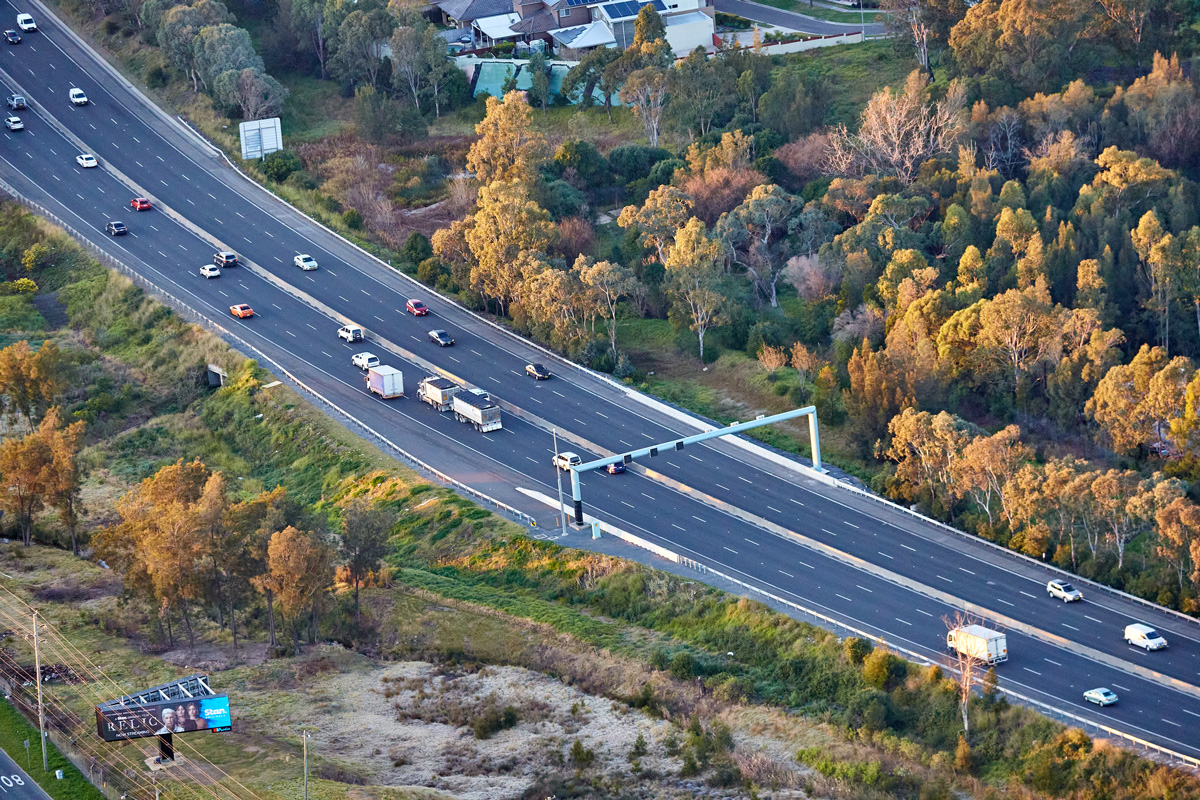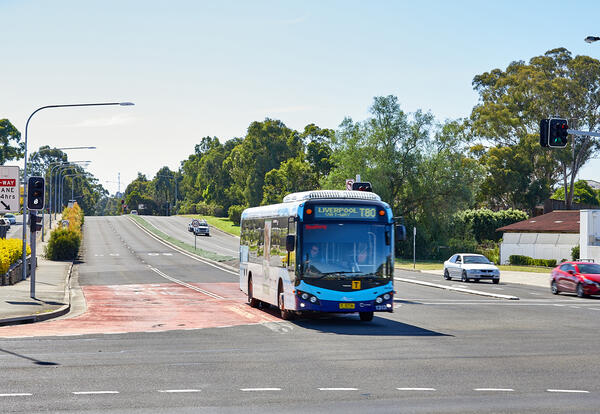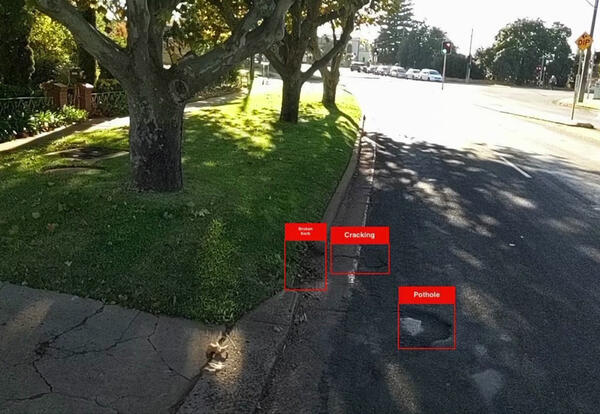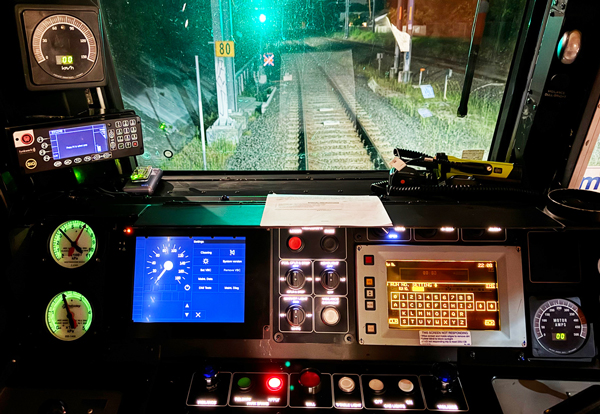Transport technology case study: M4 Smart Motorway

M4 Smart Motorway. Image: Transport for NSW
Introduction
New smart motorway technology on Sydney’s M4 has delivered significant reductions in journey times and measurable safety improvements for road users, including reducing serious collisions.
Challenge
The M4 is a 50km motorway stretching from Concord to the Blue Mountains connecting the M4 East tunnel, M7 Motorway, and several commercial centres.
Over 300,000 vehicles use the M4 Motorway each day, making it one of the busiest motorways in the Sydney motorway network for vehicles and freight.
Due to increased development and traffic volumes across Western Sydney, the M4 Motorway often operated at capacity and was frequently congested during morning and afternoon peak periods.
This congestion has been found to increase the risk of crashes, increase delays, while also increasing vehicle emissions.
Up to 30% reduction in crashes when Smart Motorways are introduced.
Solution
The main section of the M4 Motorway from Parramatta to Penrith has become the State’s first smart motorway, using a combination of new structures and technology to create a safer, smoother and more consistent travelling experience.
More than 1300 road sensors have been installed and are located every 500 metres along the M4 and on-ramps. Over 100 extra live cameras have also been installed on poles and bridges to monitor real time traffic conditions to allow for quick responses to incidents.
These installations work together in real time to prompt operator control of variable message signs, variable speed signs, lane control signs and ramp signals. The sensors detect congestion and automatically lower the speed limit on the variable signs, allowing traffic to slow down past breakdowns, while other signs provide warnings of lanes closed for accidents. The signs then return to displaying the top speed as soon as incidents are resolved.
Traffic conditions are monitored in real time and entry ramps signals, known as ramp meters, manage the number of vehicles coming onto the motorway with a quick-change traffic light system making merging safer during peak times. These tools ensure a smoother, uninterrupted driving experience. Drivers can see real time information on message boards to help them make informed decisions about their route before and during their trip on the motorway.
Outcomes
This technology has made a real difference to M4 users since its official introduction in December 2020.
During the first 2 years of operations, the M4 Smart Motorway reported the following improvements compared to the 2016 pre-smart motorway baseline:
- A 30% reduction in total crashes
- A 25% reduction in serious injuries
- A 20% reduction in travel time Paramatta and to the Blue Mountains.
Transport for NSW are currently rolling out this technology on the Western Distributor and the Warringah Freeway.
Related information
The NSW Government is investing $600 million to build the M4 Smart Motorway project, which will introduce intelligent technology to the M4 Motorway between Pitt Street, Parramatta and Mulgoa Road, Penrith.
Digital signage providing real time updates on traffic incidents and speed limit changes on Sydney’s busy Western Distributor will improve journeys between the Sydney Harbour Bridge and Anzac Bridge.
Watch the video
See how intelligent technology systems are improving safety, throughput and real time communication on the M4 motorway.
Image
Image controls:
Transport technology case studies

Priority for Public Buses at traffic lights
Three of Transport’s advanced technologies join forces to drive on-time bus running and priority through intersections.

Asset AI
Trialling artificial intelligence to revolutionise road asset maintenance and operations.

Digital Systems Program
Digital signalling means lower costs, faster trips and fewer delays.
